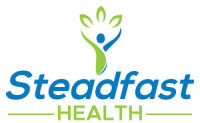Accidents or mishaps can happen anytime, anywhere with anyone. The first-hand help or first aid provided in minor or major injuries can help save a person’s life. ‘First-aid’ is the immediate medical attention at a given specific location given to an individual or group of individuals in times of injury. Providing the correct first-aid in specific situations requires an individual to have basic knowledge of technology and even training. The role of first aid is primarily to to reduce the risk of injuries caused by mishaps from getting worse before getting medical attention. Nonetheless, everyone must have a basic knowledge of first-aid to handle various situations.
Let’s look at the first-aid provided in situations like an electric shock:
Electric Shock
A person can get electrocuted with a wide range of things like lightning, power lines, electrical outlets, home appliances, tasers, and electric machines. An electric shock from household appliances might be less severe than direct power lines.
Based on the severity, an electric shock, it can cause tissue damage internally and externally that may even lead to organ damage or cardiac arrest.
Common signs of an electric shock:
- Unconsciousness
- Difficulty breathing
- Cardiac arrest
- Burns
- Seizures
- Irregular heartbeat
- Tingling sensation
Let’s look at various ways to provide first-aid to someone who has suffered an electric shock:
Keep yourself safe before handling a victim of an electric shock. Do not touch the person directly while they’re still in contact with the electricity source. Ensure that the power source or the flow of the electricity gets stopped first. Moreover, if you are likely unable to stop the flow of electricity, use bad conductors of electricity like wood or rubber to move the person away from the electric source. More importantly, remember not to use anything wet or metallic.
Here are your safety tips to consider before helping:
- Don’t try to move the person unless necessary (predominantly if they are prone to get close to further danger)
- If high voltage power lines are involved, stay at least 20 feet away and contact emergency services immediately.
First-Aid
- Try to contact local emergency services in a case where the person is experiencing unconsciousness, numbness, seizures, or troubled breathing.
- Access the person’s pulse and breathing. If you are not able to detect any pulse, provide CPR (Cardiopulmonary Resuscitation).
- Elevate the legs/feet of the victim slightly in case the person shows shock signs such as faintness, vomiting, pale skin.
- Ensure the person is lying down and place it on their side to allow the drainage of fluids. Also, avoid moving the victim in case of neck or spine injury.
- For electric burns, try to cover the area with a sterile gauze bandage. Avoid using band aids, blankets, or towels as they might do more harm by sticking at the burn areas.
- Make sure the person is kept warm.
- In case of seizure, look out for sharp objects in the victim’s surroundings and clear them. Also, control the victim’s fall if he appears to collapse to avoid further injuries.
How to perform CPR?
Performing compressions in CPR is a vital step.
- The person should be lying on their back on a firm surface.
- Kneel to the person’s side facing the neck & shoulders.
- Place your lower palm on the centre of the person’s chest.
- Now place your other hand on top of the first hand. Make sure that the elbows are kept straight and shoulder positioned directly above your hands.
- Perform compressions by pushing down your hands at least 2 inches. Make sure to use your entire body weight while performing compressions. Ensure that you give 30 compressions.
- While you are performing compression, put hard at a rate of 100 to 120 compressions in a minute.
- Continue to perform CPR until you see any movement in the person or until professional help is available.
The views and opinions expressed, and assumptions & analysis presented in this content piece are those of the author(s) and do not necessarily reflect the official policy or position of any other agency, organization, employer or company. The information, including but not limited to, text, graphics, images and other material contained on this website are for informational purposes only. The purpose of this website is to promote broad consumer understanding and knowledge of various health topics. It is not intended to be a substitute for professional medical advice, diagnosis or treatment. Always seek the advice of your physician or other qualified health care provider with any questions you may have regarding a medical condition or treatment and before undertaking a new health care regimen, and never disregard professional medical advice or delay in seeking it because of something you have read on this website.




